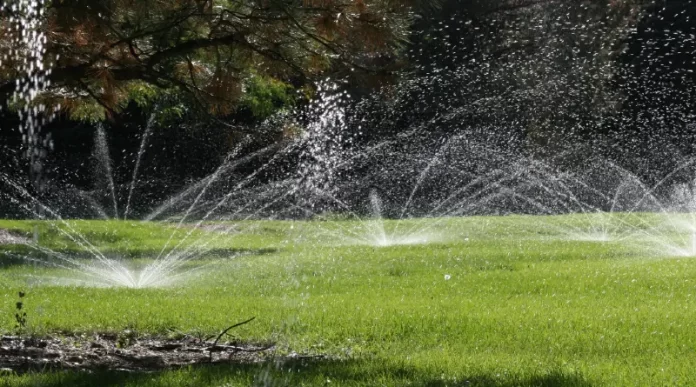Develop communities with healthier, water-efficient landscapes
Clock-based irrigation controllers and mist-producing spray heads are so last decade. Today’s irrigation systems have gotten smart—using technology that adapts to our Colorado winds, soils and weather, and products that water our landscapes more efficiently. Here are four to consider:
Weather (“evapotranspiration”) controllers:
Weather controllers are to irrigation efficiency what smart thermostats are to energy efficiency. They use local weather data and real landscape conditions (like soil type, plant type and slope) to adjust how much and how often to water.
Master valves:
When a sprinkler system is active, its water lines are under constant pressure. This means the system will bleed water 24/7 if there’s a leak, such as in leak-prone poly tubing. A master valve is an electric valve that’s installed at the base of the backflow device. It only pressurizes water lines when the controller is on, stopping endless water loss.
RELATED: Three Common Xeriscaping Myths
Rotary nozzles/high-efficiency nozzles:
Not to be confused with rotor heads, rotary nozzles distribute a series of rotating streams of water like choreographed fountains. They’re an effective way to get water to the desired plants, even in our Colorado winds. They provide better coverage and help eliminate dry, brown spots in lawns.
Irrigation Specialist Eric Olson, CID, CLIA, of Fort Collins Utilities says that many Colorado municipalities recommend rotary nozzles instead of spray heads. Rotary nozzles apply water more slowly, which improves water absorption and reduces runoff. Spray heads, in contrast, often apply a high amount of water so quickly the soil can’t absorb the moisture. They’re only 50 percent efficient.
“If water isn’t hitting the root zone, it’s wasted water,” Olson says. He says several Colorado cities are exploring whether to prohibit sprinkler heads that release more than one inch of water per hour.
Related: Landscaping for the Future
Driplines:
Granted, driplines aren’t a new irrigation concept, but they’re worth mentioning because they’re 85 to 90 percent efficient. And according to Olson, cities rarely enforce drip system bans during water restrictions.
In residential development, the key is to set up separate drip zones for the front and back of a house because the sun exposure and needs of the plants can be dramatically different. For example, plants on a northern or shady side of a home may only need half the water of plants on a sunny side.









